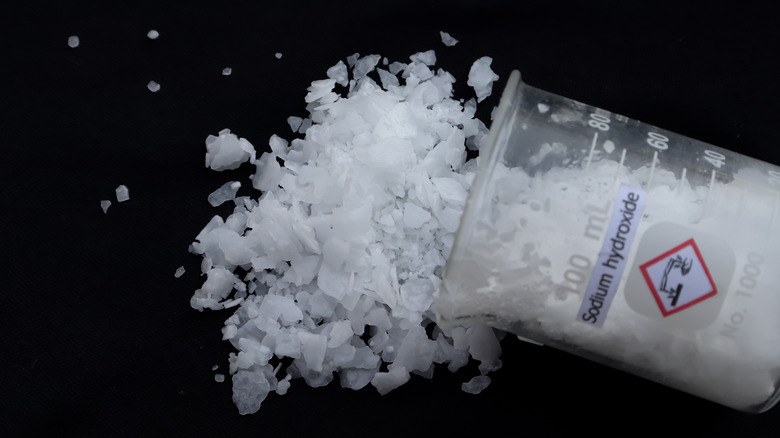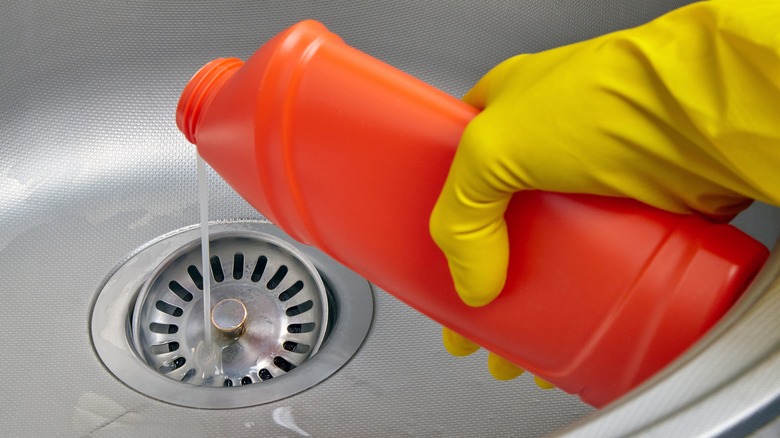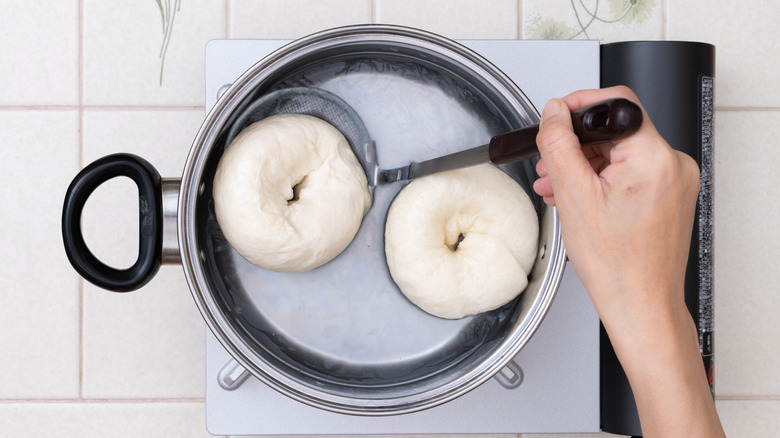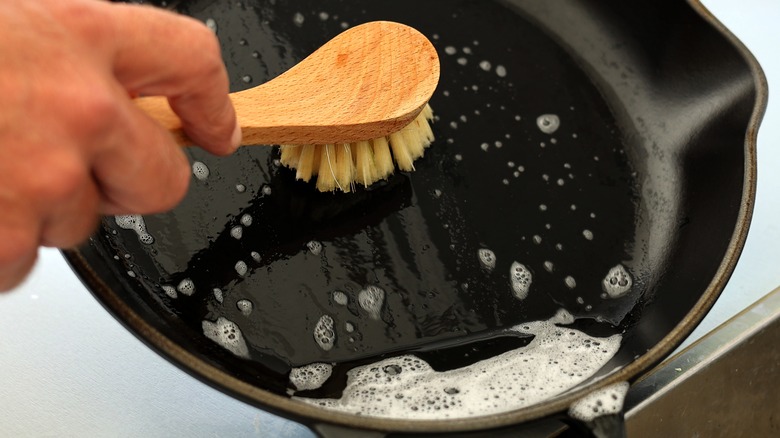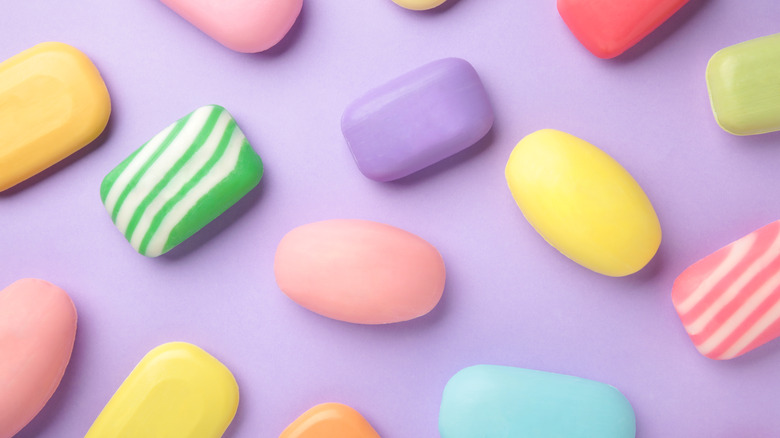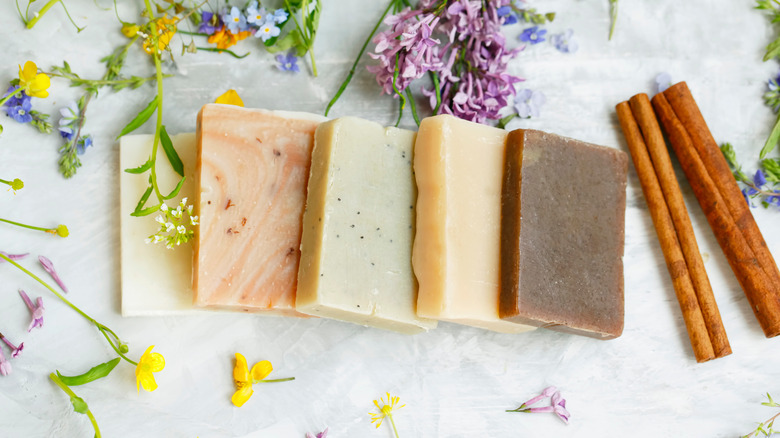What Is Lye Used For?
Lye, also known as sodium hydroxide or caustic soda, has many different uses. It is alkali and is often used to regulate PH levels as it neutralizes acid. Lye, in its natural form, is a white, waxy substance and can be sold as pearls, pellets, flakes, or large waxy blocks. It can be quite challenging to get hold of in larger quantities as it is known for its use when producing methamphetamine. Also, it is corrosive and can cause damage to skin, breathing apparatus, and eyes if used improperly.
According to Honey Sweetie Acres, there are two different types of lye. There is food-grade lye and industrial or technical-grade lye. It seems strange that a chemical that is corrosive can be used in the production of food and other things we may use on our skin, such as soap. While it may appear this way, the actual production of these products varies when it comes to the use of lye. So what is lye actually used for?
To produce drain and oven cleaners
Sodium hydroxide is regularly used in drain cleaners and oven cleaners. The sodium hydroxide, when it comes in contact with the fats and oils that are clogging up your drain or covering the inside of your oven, converts into soap which is then easily washed or wiped away. Also, when the sodium hydroxide comes in contact with water, it heats up, and this helps to melt the fats, and then they simply rinse away. Be wary, though, as when a lot of drain cleaner is used and water is added, it can heat up so much that it starts to bubble and can splash into the eyes or onto the skin, which would cause dangerous chemical burns.
JRank Science adds that some drain cleaners, in addition to using lye, also have small particles of aluminum metal. This reacts with the caustic soda when water is introduced and produces small bubbles of gas that help to remove any large pieces of solid matter that might be stuck in the drain pipes. This makes sodium hydroxide a very effective ingredient in drain uncloggers and cleaners.
To make food
Believe it or not, those New York-style, chewy, delicious bagels and pretzels are actually dipped in lye before they are baked. Bagels are traditionally boiled before they are baked, and My Recipes stated that boiling the bagels in a very heavily watered-down lye solution breaks down some of the proteins on the surface of the bagel and speeds up the cooking time. It also gives the bagels that well-known dark crust that most people associate with a good bagel.
Lye is also used in food processes such as the curing of olives. Hunter-Angler-Gardener-Cook commented that the lye breaks up the bonds between the oleuropein phenol compound and sugars which cancels out the bitterness of the olives and leaves them sweet and moreish. A small amount of food-grade lye is added to the curing solution, and then, after curing, the olives are well rinsed so that they are perfectly safe to eat.
To clean cast iron
If you use cast iron cookware in your kitchen, you'll know how effective it is and also how expensive it can be. When it becomes coated in that black, hardened, baked-on grease from lots of use, it may feel like the only thing you can do is replace it. However, making a lye bath and using it for soaking your cast iron items will bring them back to looking their brand new, shiny best. According to Cast Iron Collector, one pound of lye granules, pearls, or flakes added to five gallons of water will give you the perfect solution for keeping your kitchen cookware in great condition.
Depending on how thick the baked-on grease is, you will need to leave the items in the lye bath for a few days, and, eventually, the solution will become murky, but Cast Iron Collector assures that it will not spoil the efficiency of the bath. They also point out that it is most effective when it is warm. So if possible, leaving it outside in the sunshine or in a conservatory or greenhouse would be best. Make sure to have a well-fitting lid on top of the container, as the solution will cause skin irritation if touched. Also, be sure to rinse any items extremely well to remove all traces of the lye bath before using them for cooking again.
To manufacture soap
You can't make traditional hard soap without using lye. As we know that lye is corrosive and dangerous when in contact with skin, how does it make a good ingredient for soap? Hobby Farms explained that soap is what is created when combining fat and oils with caustic soda or lye. A chemical reaction happens when caustic soda comes into contact with oil or fat, and once that chemical reaction happens between these items, the fat and lye no longer exist. It is, in effect, removed from the finished product entirely.
Another product that is produced by traditional soap making is glycerin. In commercial soap making, the glycerin is removed and used for other products, but in traditional homemade soap this glycerin is left in, and for this reason, homemade soaps are usually much more moisturizing. Greatist went on to say that glycerin replenishes your skin's natural moisture and forms a protective barrier that keeps it safe from irritation and dryness.
To make soap at home
Now you know soap that is made commercially has the glycerin removed, you might be interested in making your own soap and enjoying the benefits of extra moisture in your skin. For a simple lye soap recipe, Gartur Stitch Farm suggested gathering 450g coconut oil, 450g olive oil, 133g of lye, 297g water, 10g of essential oils of choice, a non-aluminum bowl for heating the oils, digital scale, wooden spoon, soap molds, and gloves and eyewear.
Melt the coconut oil in a microwave. Put your gloves and eyewear on, then very carefully separately measure the lye and the water. Add the water to the lye while stirring very carefully with a spoon. Always add the lye to the water and never the other way round. The mixture will become very hot as the lye and water react. While it is cooling, pour the olive oil into your melted coconut oil, and once fully cooled, add the lye and water mixture. Use a stick blender to fully mix everything for about 5 minutes until it starts to thicken and become opaque. Add any essential oil you prefer and then stir it in and pour it into your soap mold. Cover with parchment and leave it to set for 24 hours. After it has set, remove from the mold using gloves and slice into bars and leave the bars somewhere safe to cure for four weeks to ensure all the lye has been neutralized.
